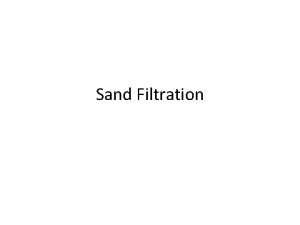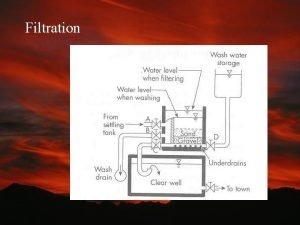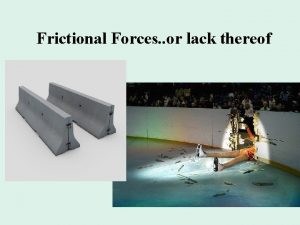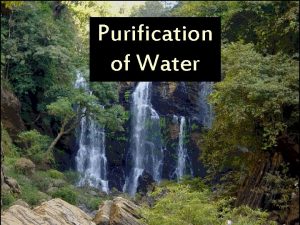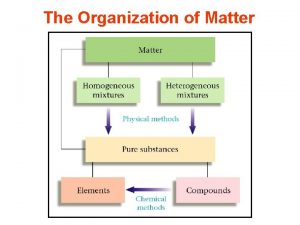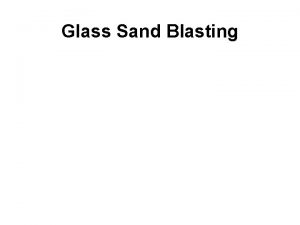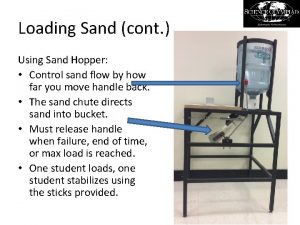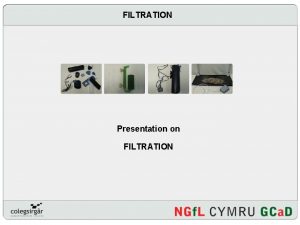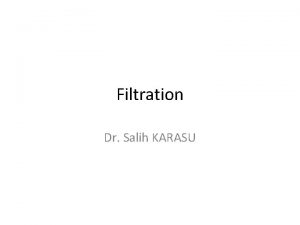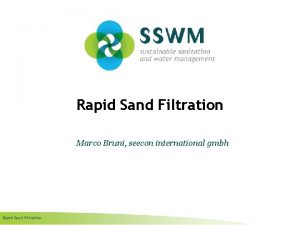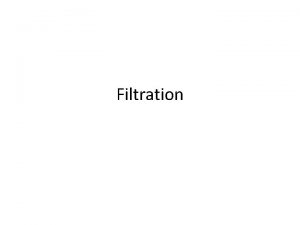Filtration Filtration Single Media Rapid Sand Dual Media









- Slides: 9

Filtration

Filtration Single Media Rapid Sand Dual Media Rapid Sand

Filtration Mechanisms Surface Filtration - Screening Particles larger than pore openings between filter Particles are removed on the surface of the filter Rapid increase in head loss through filter – filter blinding Deep Bed Filtration Particles removed throughout depth of filter as the collide with filter particles and stick. Small particles may be removed Slower increase in head loss – longer filter runs

Filter Cleaning As filter removes more particles the area that will allow flow of water becomes smaller. A smaller cross sectional area means the velocity must increase to allow the same amount of water to pass. This results in higher head losses. As velocity increases, the likelihood of scouring particles off the filter media becomes higher. This results in an increase in particles in the effluent. Called filter beakthrough. If the head loss gets too high or the particle count in the treated water gets too high (measured by turbidity or particle count), the filter must be cleaned. The cleaning process is called filter Backwash.

Backwash Open valve D, close valves A and C, open valve B Reverse direction of flow of water through the filter. Increase velocity until filter media particles become fluidized (suspended in flow). Particles bump against each other knocking the “dirt” off of them.

Design Parameters Filter Loading rate Around 4 gal/(min. ft 2)

Disinfection Chlorine Compounds Chlorine (Cl 2) Disinfection by-products tri-halomethanes Chlorine Dioxide (Cl. O 2) Chlroamines (Cl 2 and ammonia) Hypochlorite ion (OCl-, bleach) Ozone

C-T Concentration x time Effectiveness of disinfection a function of C-T

Fluoridation
 Perbedaan rapid sand filter dan slow sand filter
Perbedaan rapid sand filter dan slow sand filter Residual chlorine
Residual chlorine Dual media filtration
Dual media filtration Frictional force simple definition
Frictional force simple definition Cheap casting sand
Cheap casting sand Double pot method of chlorination
Double pot method of chlorination How to seperate salt and sand
How to seperate salt and sand Specific cake resistance and filter medium resistance
Specific cake resistance and filter medium resistance Syngenta corn brands
Syngenta corn brands Single phase dual converter
Single phase dual converter
